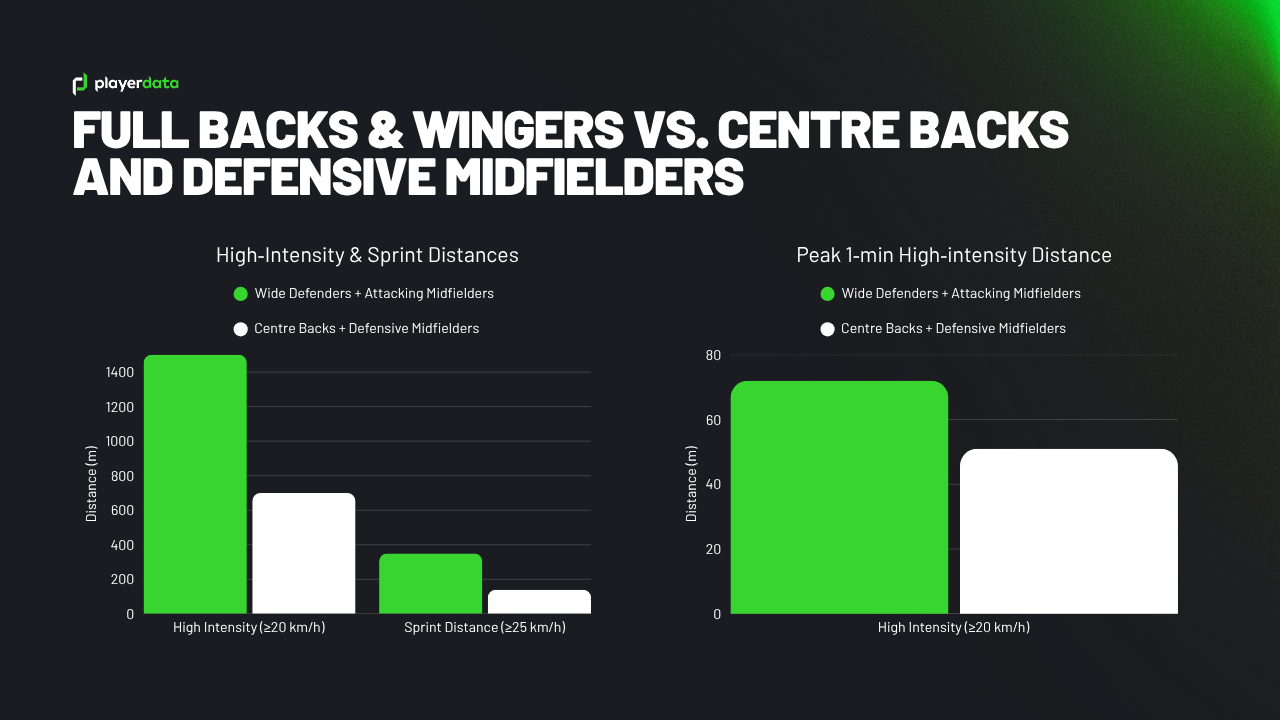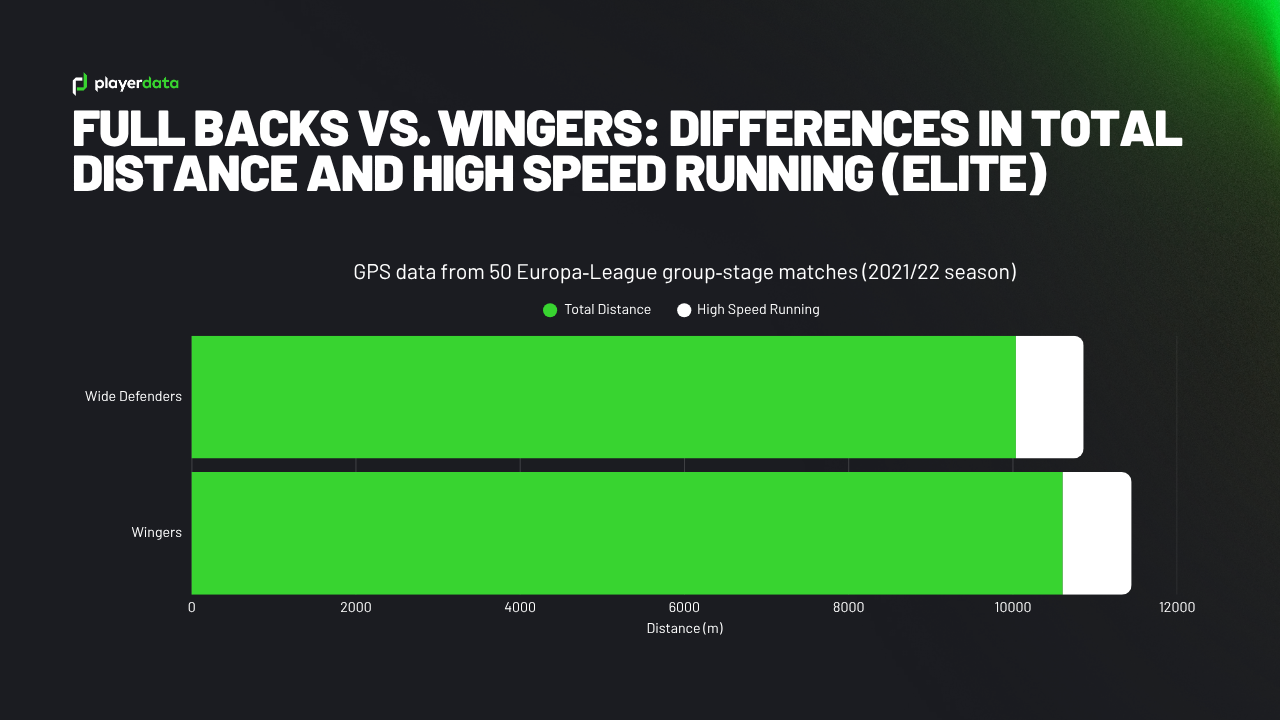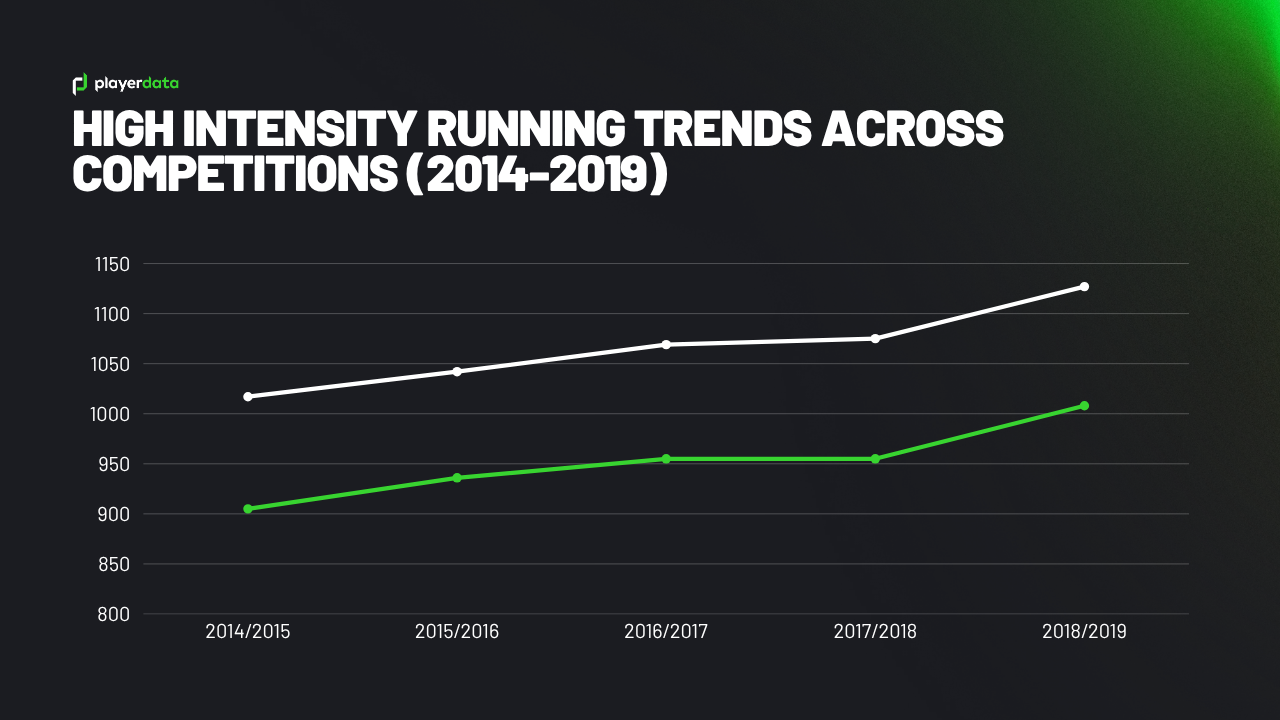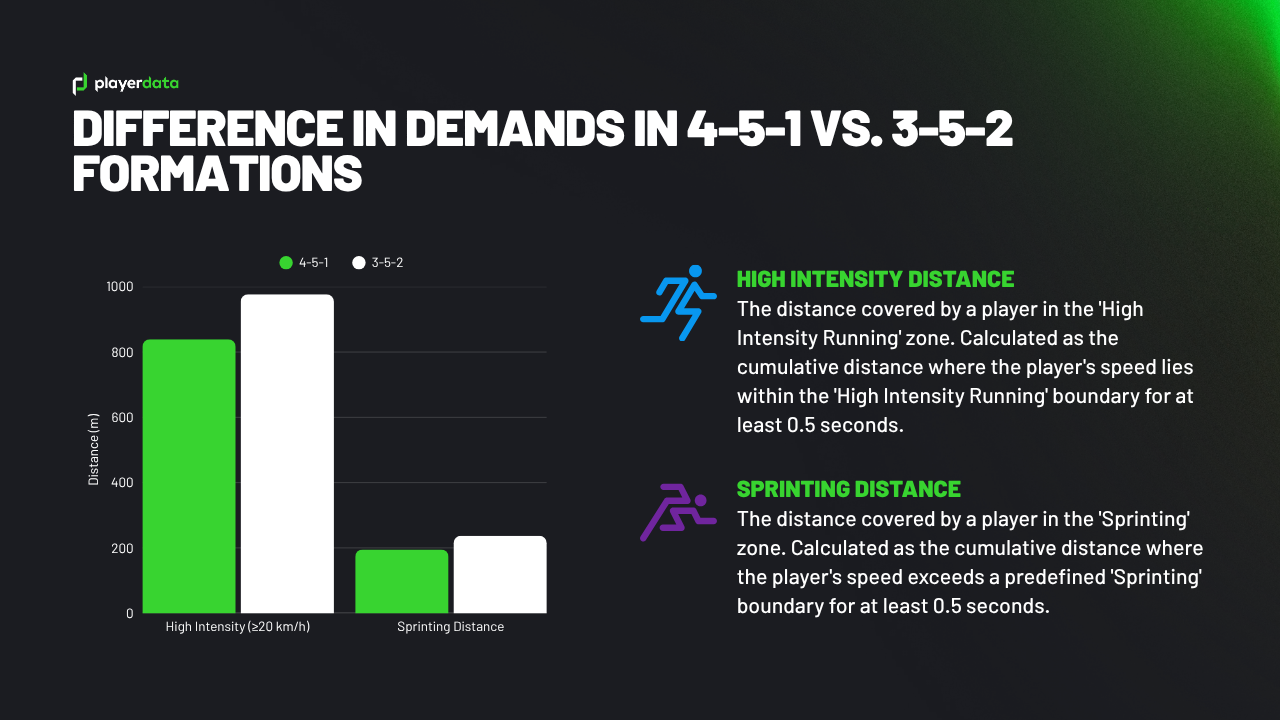The game has changed.
Modern fullbacks are required to defend wide areas whilst also being expected (and judged) on supporting attacks with overlapping runs. This modern “dual role” means they often cover large distances and transition rapidly between low‑intensity and high‑intensity actions.
Wingers have also traditionally been seen as players who are fast, possess high levels of ‘flare’, with the ability to create chances, and stretch defences; placing greater emphasis on repeated sprints, high‑speed dribbles and recovery runs down the flank. Comparing these roles helps coaches design position‑specific conditioning drills and informs talent identification.
What The Data Says
When we investigate both sets of wide positions together vs. more defensive focused positions we can see the clear differences. At the elite level, wide defenders plus attacking midfielders cover roughly twice the high‑intensity distance and sprinting distance compared with centre backs and defensive midfielders.

Recent studies show that full backs and wingers are arguably two of the most physically demanding positions, yet there are still subtle differences when we break down the wider positions further.

Research across elite and sub-elite football consistently shows that wingers (or wide midfielders) cover more total and high-intensity distance than fullbacks. While these numbers isolate specific seasons, the bigger picture is clear: the modern game is placing ever-increasing demands on wide positions, driven by tactical shifts such as high pressing and inverted roles.
GPS tracking, like Edge Air, enables coaches and practitioners to keep pace with these changes — not only by proactively managing workload to reduce injury risk but also by better understanding performance outputs and tailoring training to the evolving demands of the game.
The data begins to become more valuable to coaches when we start to investigate further the year on year increasing physical demands that are not only required from a performance perspective, but also load management. As seen below, research shows how wide players more than ever need to be able to run faster for longer.

How the Data Can Support Tactical Decision Making
The physical demands of the game are only one element here. Different formations, patterns of play, and game strategy all influence the output of each position in their own right. This is where having access to objective data and an understanding of what it means can support decision making for tactical and technical coaches in addition to supporting physical performance staff.
.png)
As seen in both the studies above and to the left, teams employing more offensively oriented formations (e.g., 4‑2‑3‑1 or 3‑5‑2) demand greater high‑intensity and sprinting output from their wide defenders and wingers. In contrast, formations with wider distribution of players (e.g., 4‑3‑3 or 4‑5‑1) tend to spread the workload, reducing high‑speed demands on individual wide players.

This highlights the importance of knowing the objective demand changes that formations and or/styles of play can have on players’ output. The data helps to better manage everything from substitutions, to recruitment, to player workload management.
How PlayerData Supports Coaches Around the World
Research highlights the importance of objectivity in decision-making. PlayerData empowers coaches to make better-informed choices for each position based on what is actually happening on the pitch and in training.
For wingers and wide defenders, physical performance coaches and sport scientists can effectively manage workload, while head coaches gain immediate tactical insights. Our heatmap feature provides clear information on average player positions, and when combined with tactical playbacks, delivers tangible evidence of how individuals perform within specific formations and systems.

From Wigan Athletic Academy in the UK to IMG Academy in the USA, PlayerData provides coaches with the insights they need to support athletes in training smarter and maximising their potential.
"The PlayerData system provides high integrity data," said Nick Davies, the Head of Academy Performance at Crystal Palace FC. "It’s also easy to use with quick turn times, incredible support, and customisation options that we value."
Interested in learning more about how PlayerData could help your club?
Submit your information below, and we'll reach out with more information.


.png)
.jpg)
.png)